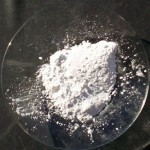Epsom Salt, also known as “Magnesium Sulfate,” is widely known for its many health benefits. Epsom Salt is often used as a saline laxative, pain reliever, and natural muscle relaxer.
However, there are many other beneficial uses for Epsom Salt that many people may be unaware of. For example, Epsom Salt is very beneficial when used in organic gardening. Magnesium and sulfur occur naturally in soil, but they can become depleted by several conditions (i.e. heavy agricultural use).
The use of Epsom Salt in organic gardening has been around for a very long time. It is said to help grow produce that is much more flavorful, and flowers that are more vibrant in color, plants that are greener and healthier, amongst many other benefits.
- Helps keep foliage greener: Magnesium is essential for the foliage of plants because helps in chlorophyll production. Plants with a magnesium deficiency can be spotted by their yellow leaves. The use of Epsom Salt with these yellowing plants can help lead to greener foliage and healthier plants.
- Increased Nutrient Absorption: Adding Epsom Salt to your soil can assist your plants in the absorption of soil nutrients. The use of Epsom Salt can greatly reduce the need for chemical fertilizers – avoiding those chemical fertilizers is essential for anyone who chooses to stick to organic, natural gardening.
- Improves Seed Germination: Using Epsom Salt during planting can help increase your seed germination because the Epsom Salt acts as a soil amendment.
- Beautiful Roses: Magnesium plays a vital role in flower blooms – especially with roses. Using Epsom Salt in your rose garden will help your rose bushes to create larger blooms, and a greater number of beautiful blooms. The magnesium in the Epsom Salt, of course, increases chlorophyll production, so you should expect to see a quicker growth rate in your rose garden with the use of Epsom Salt.
- Prevent Curling Leaves: You can make a homemade solution to spray directly on your plants. Mix 2 tablespoons of Epsom Salt in 1 gallon of water. Shake well, and pour into a spray bottle. Misting your plants with this mixture can prevent leaf curling.
- Prevent Shock in Nursery Transplants: Using Epsom Salt when transplanting nursery plants into your garden can prevent transplant shock.
- Sweeter Fruits and More Flavorful Vegetables: Using Epsom Salt in gardening can help prevent plants from becoming magnesium-deficient, improve chlorophyll levels, and helps your plants to create sweeter, more flavorful fruits and vegetables. This is especially important just after your plants have reached their flowering stage – just before they produce fruits or vegetables.
- Natural Pest Deterrent: Using Epsom Salt in your garden will help deter pests such as slugs and voles.
Tips for Using Epsom Salt in Your Home and Garden:
- Houseplants: Mix 2 tablespoons of Epsom Salt per gallon of water – use this mixture to feed your houseplants monthly.
- Shrubs: Use 1 tablespoon of Epsom Salt per 9 square feet. Apply near root zone every 2-4 weeks.
- Lawns: Apply 3 pounds of Epsom Salt per every 1,250 square feet with a spreader, or dilute in water and apply with a sprayer.
- Trees: Apply 2 tablespoons per 9 square feet. Apply near the root zone three times per year.
- Roses: Apply 1 tablespoon per foot of plant height, per plant. Apply every 2 weeks. Apply a tablespoon of Epsom Salt to hole when planting new roses. Spray rose bushes with Epsom Salt solution every week to discourage pests.
- New Garden: Sprinkle 1 cup per 100 square feet. Mix into soil prior to planting.
Epsom Salt is such a great aid to have around your house – from using it as a saline laxative, to using it in your bath tub to relieve sore, aching muscles, to all of its beneficial uses when gardening and keeping houseplants.
It is pH-neutral, so it will not damage your soil. It is safe to apply, unlike dangerous chemical-filled fertilizers. It can be used at every stage of gardening – from planting, to transplanting, to maintaining the health of your plants. And, best of all: it is very inexpensive, and easy to find at your local grocery or department store.
“Magnesium sulfate anhydrous”. Licensed under Public domain via Wikimedia Commons – http://commons.wikimedia.org/wiki/File:Magnesium_sulfate_anhydrous.jpg
#mediaviewer/File:Magnesium_sulfate_anhydrous.jpg



